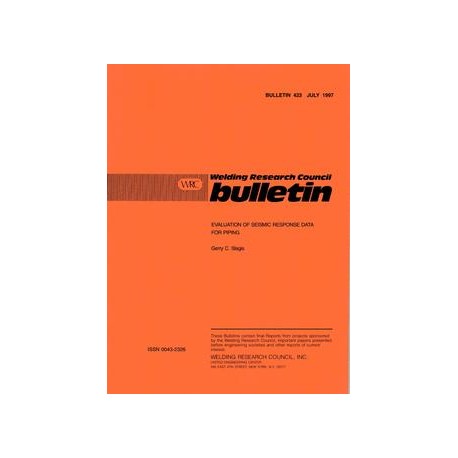Cart 0 Product Products (empty)
No products
To be determined Shipping
$0.00 Total
Product successfully added to your shopping cart
Quantity
Total
There are 0 items in your cart. There is 1 item in your cart.
Total products
Total shipping To be determined
Total
New Reduced price!  View larger
View larger
 View larger
View larger WRC 423
M00000616
New product
WRC 423 Evaluation of Seismic Response Data for Piping
Bulletin / Circular by Welding Research Council, 1997
G. C. Slagis
In stock

